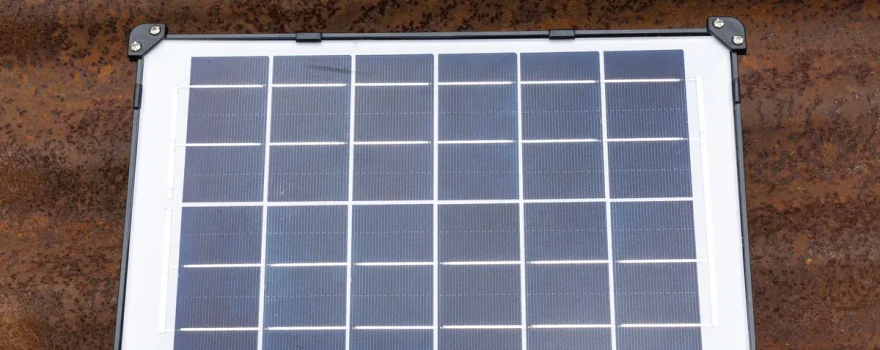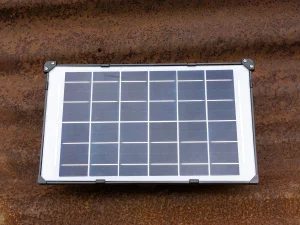
Solar Panel Self-Installation Guide

| Stage | Key Points |
|---|---|
| Preparation | Procuring materials, methodical unboxing, shipment examination, safety protocol familiarization. |
| Necessary Materials | Wiring, junction boxes, splices, AC breakers, disconnects, fuses, PV meters, conduits. |
| Unboxing | Immediate unpacking, inspection for completeness, storing small parts, charge batteries if delayed installation. |
| Safety Measures | Use of protective equipment, fall protection for roof mounts, dig safety for ground mounts, electrical safety, heavy lift safety. |
| Wiring & Electrical | Plan wiring route, efficient wiring management, different wiring paths for grid-tie and off-grid systems. |
| Mounting Your Inverter | Inverter installation varies by system type; ensure proper installation clearances and positioning. |
| Grounding Your System | Proper grounding reduces electric shock risk and ensures safe fault current path. |
| Backfeed Breaker Installation | Installation of backfeed breaker in the main breaker panel for grid-tie systems. |
| Mounting Your Solar Panels | Roof and ground mounting processes, including rafter marking, rail installation, and panel securing. |
| Solar Battery Installation | Setting up a battery bank with specific installation and enclosure requirements for each battery type. |
Undertaking solar panel installation independently offers substantial cost savings and a sense of personal achievement. By excluding contractors, significant financial benefits are achieved, coupled with a sense of pride in self-accomplished tasks.
However, for those new to DIY solar projects, the process might appear challenging. Fear not! Whether you’re considering a grid-tie system or an off-grid setup, this detailed, step-by-step guide will navigate you through every phase of the installation journey.
Success in solar panel installation hinges on a well-structured plan that prioritizes safety for all participants.
Before starting, several preparatory steps can streamline the process. These include:
- Procuring additional materials not included in your delivery (such as wiring and tools).
- Methodical unboxing of your system.
- Examination of your shipment for completeness and intactness.
- Familiarization with safety protocols for system installation.
Necessary Materials
Our kits supply essential items for a smooth installation. However, you’ll need to source extra materials for installing solar panels, including:
Wiring
Your electrical wiring blueprint will specify wire types and lengths required. Obtain your wiring schematic to procure materials from a local store.
Junction Boxes & Splices
Use insulated connectors or certified splicing devices (excluding wire nuts for DC splices). Junction and splice boxes must comply with circuit voltage and amperage requirements. Outdoor boxes should be outdoor-rated. Ground splices generally need an irreversible splice.
Example:
Irreversible splice.
AC Breakers & Sub-Panels
AC breakers are vital for AC power import/export. Circuit breakers come with various mounting options. Consult your AC breaker panel for compatible choices. Dedicated sub-panels are used for combining AC solar circuits, without load breakers inside them. AC sub-panels should have sufficient capacity for incoming solar output.
Example:
Schneider AC breaker panel.
AC Disconnects & Fuses
Lockable safety disconnects are typically required. Connections feeding back into the grid need a non-fused manual AC Disconnect (check if included with your system). Line-side tap connections require a fused manual AC disconnect for overcurrent protection. AC disconnects should be mounted outside, within 10 feet or in direct sight of your main meter. Confirm placement requirements with your AHJ (Authority Having Jurisdiction).
Example:
Square D lockable safety disconnect.
PV Meters
Grid-tied systems may require a PV meter for measuring solar array output. You might only need to install the meter socket or base. The utility will fit the meter face post system activation approval. Consult your utility for a list of approved meter sockets.
Example:
Itron PV Meter.
Conduits & Meters
The NEC (National Electric Code) mandates transitioning solar wiring to conduit post-array. EMT (electrical metallic tubing) is standard, unless specified otherwise. Opt for larger conduits for easier conductor insertion, but never smaller than specified.
EMT vs. ENT Conduit
EMT, a thin-walled, rigid raceway, typically made of steel, requires grounding. ENT, a flexible, non-metallic raceway, doesn’t need grounding but is less frequently permitted under building codes.
Example:
Electrical Metallic Tubing (EMT).
Mounting Materials
Ground Mounting
Ground mounts necessitate concrete, bracing forms, and 2- or 3-inch mechanical tubing. Local sourcing of these materials is more cost-effective. Your racking report will detail required pipe length and concrete volume.
Additionally, lumber is needed for temporary framing to secure pipes during concrete curing. The ground mount section of this guide provides more information on substructure construction.
Roof Mounting
Purchase roof sealant tubes to prevent leaks and wind damage, ensuring compatibility with your roof material.
Also, a quality drill is recommended. You’ll need a long 1/8 inch drill bit and a 7/16 inch deep socket for lag bolts.
Example:
Henry roof sealant, suitable for your roof material.
Unboxing
Unpack your system immediately upon arrival. There’s a 24-hour window post-delivery for submitting shipping claims to Unbound Solar.
Find a spacious, clean area for unboxing and inspecting your equipment. Store small parts in labeled resealable bags to avoid misplacement. Cross-reference shipment contents with the packing list for completeness. Document and report any missing or damaged items to Unbound Solar. For delayed installations, charge batteries immediately to prevent failure. Preserve micro-inverter or power optimizer documentation for later use in creating an array map.
Safety Measures
Given the physical and electrical nature of solar installation, safety is paramount.
Protective Equipment
Solar equipment can cause various injuries. Employ appropriate gear and take breaks to reduce fatigue.
Always use eye protection, gloves, and sturdy boots. Remove metallic jewelry. Wear long sleeves when handling concrete to prevent skin burns. Use a roof anchor and harness for rooftop tasks.
Fall Protection (Roof Mounts)
Roof installations require fall protection measures.
Install roof anchors. Utilize a safety harness linked to the anchor during rooftop work. Opt for flat-soled boots for better grip on roof surfaces. Consider renting scaffolding or a boom-lift for ease of access. Stay alert to weather conditions impacting roof safety.
Example:
Super Anchor safety harness for roof work.
Dig Safety (Ground Mounts)
Ground installations also pose hazards.
Contact local authorities before digging to avoid underground utility damage. Take precautions when operating concrete trucks or heavy machinery. Wear protective gear when handling wet concrete. Utilize an N-95 respirator mask if mixing concrete. Ensure trained personnel or experts are present when using heavy machinery.
Example:
N-95 respirator mask for safe concrete mixing.
Electrical Safety
Electrical work demands caution.
Remove all metallic jewelry. Keep a multimeter nearby to ensure no voltage presence before proceeding. Ensure proper wire stripping and/or termination using appropriate tools. Position wires away from potential damage sources.
Example:
Multimeter for voltage checks.
Heavy Lift Safety
Consider these guidelines for safe lifting:
Plan your lift; understand the load and destination. In windy conditions, enlist additional help for panel transportation. Ensure stable footing. Lift with your legs, not your back, to avoid strain. Refrain from twisting while lifting and keep the load close to your body. Request assistance when needed and wait for help if necessary. Use lifting equipment for heavy loads.
Wiring & Electrical
Proper wiring is a critical aspect of solar installation, with specifics varying based on system type. This guide segment details wiring planning, system grounding, and utility grid connection if applicable.
Wiring Management
Efficient wiring management enhances the ease of solar panel installation.
Plan your wiring route in advance to avoid array access interference. Utilize wire clips to secure factory wire leads, preventing movement or roof contact (NEC requirement). Wire clips enable wire running along rails or the solar panel frame. Many solar components employ spring clamps; familiarize yourself with their operation for secure wire seating.
Electrical Connection
The wiring pathway will vary with system type. Below are summaries for each system configuration:
Grid-Tie Wiring Path (Centralized SolarEdge / SMA Inverter)
- PV strings to junction box
- Junction box to inverter(s)
- AC Out to main/sub-panel
Refer to SolarEdge’s or SMA’s installation videos for detailed wiring demonstrations.
Grid-Tie Wiring Path (Enphase Micro-Inverters)
- PV panel to micro-inverter
- Micro-inverter to trunk cable
- Trunk cables to junction box
- Junction box to main panel
Enphase provides a comprehensive installation video for hands-on guidance.
Off-Grid Wiring Path
- PV strings to combiner box
- Combiner box to charge controller(s)
- Charge controller(s) to battery bank
- Battery bank to inverter(s)
- Inverter(s) to load panel
A separate generator connection to the inverter is also required.
Array Maps for Micro-Inverters/Optimizers
If your system uses micro-inverters or power optimizers, create an array map for device identification within the array.
Utilize provided stickers, QR codes, or unique identifiers. Attach these to a paper to form an array map. Plug this map into your monitoring software during commissioning for accurate monitoring and defective equipment reporting.
Off-Grid DC Wiring
Off-grid systems involve more terminations and higher amperages.
Check all AC, DC, and communication connections for proper setup. Mark tightened connections with a paint pen for future reference. Terminate the solar positive wire at the SOLAR INPUT (+) busbar, avoiding the DC BATT (+) busbar. Double-check terminal or busbar voltages before continuing with your build.
Planning Your Electrical Route
Pre-plan your electrical route, considering the system type and adhering to safety equipment and wiring diagram guidelines.
PV Sub-Panels
Systems with multiple inverters may use an AC sub-panel to combine AC circuits. These sub-panels should not contain load breakers.
Roof Mount Electrical Route
Conceal wiring in attics where feasible, ensuring connectivity to array, breaker box, panel, meter, and system components. Secure wiring with cable clips. Avoid direct wiring contact with the roof. Transition wiring from the solar source to a junction box, then to the conduit run. Maintain wiring within the conduit until reaching the inverter (grid-tie systems) or charge controller (battery-based systems). Use conduit mount flashings for rooftop conduit security.
Example:
Conduit run secured by Quick Mount conduit penetration flashing.
Ground Mount Electrical Route
Organize exposed wiring under the array using cable clips. Ensure these are secured to withstand strong winds and positioned to avoid hindering maintenance tasks.
Before commencing any digging activities, contact the local authority to ensure there are no buried gas or electrical lines in the vicinity. This precaution is vital for safety.
When using heavy machinery, such as a concrete truck, be cautious not to traverse over any underground gas lines, plumbing, or septic systems, as these could be damaged.
Your wiring diagram is a crucial tool. It provides essential information on trench depth, wiring and conduit size/type, and the total length of the run. Additionally, it includes considerations for voltage drop/rise. Regularly refer to this diagram during planning.
Mounting Your Inverter
Inverter installation varies based on the type of solar system. Grid-tie systems offer flexibility in inverter placement: indoors on a wall, outdoors, or attached to a ground mount substructure. For off-grid systems, inverters must be wall-mounted indoors.
Wall-Mounted Inverters (Grid-Tie & Off-Grid)
Adhere to manufacturer guidelines regarding installation clearances to ensure effective cooling of the equipment.
Inverters with integrated disconnect switches should be positioned no higher than 2 meters (6.5 feet) above ground, unless an alternative switch meeting the NEC’s AC disconnect requirements is part of the system design.
In garages, keep any ignition sources (inverters and disconnects) at least 18 inches above ground level.
For outdoor installation, position inverters away from direct sunlight and sprinkler systems.
Inverters Mounted on Ground Mount Substructure (Grid-Tie Only)
Install the inverter at least 36 inches above ground to prevent mud splatter during heavy rainfall.
Ensure the inverter is shaded from direct sunlight.
Secure the inverter bracket to the support structure using threadlocker on the hardware.
Grounding Your System
Proper grounding of your solar system’s electrical components is crucial. Grounding reduces the risk of electric shock, power surges, and static electricity build-up. It also provides a safe path for fault current in case of circuit failure.
Metal parts of the electrical system must be bonded to the ground, and conductive materials (like EMT, metal boxes) must be grounded together. This ensures a uniform ground reference across all equipment.
EGC and GEC Grounding
- EGC (Equipment Grounding Conductor) connects the racking hardware, metal enclosures, and EMT conduit.
- GEC (Grounding Electrode Conductor) links the ground rod to the electrical distribution service. In most AC systems, the neutral conductor is bonded to the ground at a single point.
Integrated Grounding
Solutions like IronRidge’s UFO and bonded fasteners can ground an entire solar array with just one grounding lug. For mounts without integrated grounding, such as pole mounts, each panel and component must be grounded using UL-listed clips or lugs.
Backfeed Breaker Installation (Grid-Tie Only)
Grid-tie systems require a backfeed breaker in the main breaker panel, allowing the system to feed power into the utility grid. This breaker should be positioned at the opposite end of the panel from the grid input breaker. Tandem Breakers can be used to accommodate additional breakers in a single slot.
How to Install a Backfeed Breaker
If you’re not experienced with breaker panels, consider hiring a professional electrician. For those comfortable and safe with such tasks, follow these steps:
- Choose the correct breaker size compatible with your panel.
- Work on a non-conductive surface with insulated tools and a multimeter.
- Turn off the circuit breakers, then the main breaker.
- Remove the panel cover and test for current.
- Replace the old breaker with the new backfeed breaker, ensuring proper positioning.
- Connect the solar circuit wires to the breaker and tighten.
- Check for any loose connections and tighten as needed.
- Replace the panel cover, turn on the main breaker, and then the branch breakers, leaving the solar backfeed breaker for last after inspection and interconnection agreement.
Mounting Your Solar Panels
Once your electrical plan is set, the next step is to mount your solar panels, whether on the roof or the ground.
Roof Mounting
Roof mounting involves five main steps:
- Locate and mark roof rafters.
- Install roof attachments for securing rails.
- Set up racking rails.
- Lift panels onto the roof.
- Secure panels onto the rails.
Step 1: Marking Roof Rafters
Locate rafters using visual, echo, or exploratory drilling methods. Use a chalk line for visual guidance on rafter locations.
Step 2: Install Roof Attachments
Ensure proper spacing and layout for flashings, which should align with the solar panel mounting holes. The process varies depending on the roof type (composite/asphalt shingle, metal, tile, or ballasted mounts for low-slope/flat roofs).
Step 3: Install Racking Rails
Cut and position rails according to the Racking Report, ensuring alignment with panel mounting holes. Use a level to ensure evenness and adhere to manufacturer’s torque specs for tightening.
Ground Mounting
Ground mounting involves three key steps:
- Building a foundation.
- Installing racking rails.
- Mounting panels onto the rails.
Step 1: Building a Foundation
Follow the specifics in the Engineering Report for digging anchor holes and setting piers. Safety gear is essential when working with concrete.
Step 2: Installing Racking Rails
Position the rails as per your Racking Report, using a rail connector bracket and U-bolts for attachment.
Step 3: Mounting Panels
Follow the manufacturer’s instructions for panel placement and securing, typically using clamps like the IronRidge UFO.
Solar Battery Installation
For off-grid or grid-tie systems with battery backup, the final installation step is setting up a battery bank, which can be Flooded Lead-Acid, Sealed Lead-Acid, or Lithium-Ion.
Battery Room Designs
Each battery type has specific installation and enclosure requirements. Ensure adequate ventilation, temperature control, and structural support.
Battery Bank Installation
Follow general guidelines for installation, which vary by battery type. Ensure proper ventilation, adherence to NEC standards, and use of UL-listed terminal lugs. Maintain space between batteries and adhere to safety measures, including protective gear and handling precautions.
Battery Wiring
Consistent wire sizing and length are crucial for connections. Ensure secure torquing and proper routing of cables, keeping them away from sharp edges and ensuring they don’t obstruct battery ventilation.
